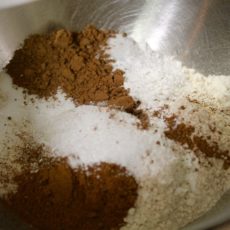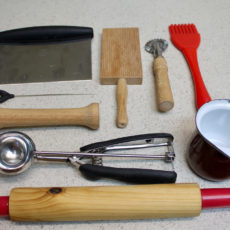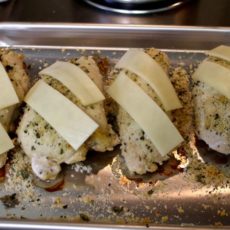To start off 2023, here’s a follow-up to an entry I wrote almost 7 years ago–better late than never, I always say. 19-17: Butter, Margarine, and Oils II is the sequel to 19-16: Butter, Margarine, and Oils I–I had promised back then that I’d write it, I just didn’t think it’d take me that long to do it. You’ll see why this one took so much longer than the first one once you get into it.

To give you an idea of why this one took so much longer: it actually gets more into the different types of oils and fats–the first one was more of a brief overview of the concept.
After the jump, I’ll give some links to Simply Delicious recipes that use these different types of oils. We’ll also take a look at the back of the card, which goes into more detail about different types of fats (butter, margarine, lard, etc.).

Biggest thing to take away from this one is that oils are liquid at room temperature, and fats are solid at room temperature. Both serve similar purposes, but have different applications and uses based on the dish you’re trying to make and the result you’re trying to achieve. Since they’ve provided some categories for the oils (I LOVE categorization), I’ll stick with that and then break them down by category.

Nut Oils
So far, I haven’t covered any recipes with almond, hazelnut, or walnut oil, which are the types of nut oils mentioned above. Wikipedia also lists other types of nut oils like cashew, pecan, and pistachio oils. Here’s an even more comprehensive list that also includes seed oils, which I’ll talk about more below.
However, I offer you 4-2: Green Beans with Hazelnut Butter (pictured above) for now as a substitute/placeholder.

Fruit Oils
Simply Delicious offers two types of fruit oils–olive and avocado. I have used avocado oil in the past, but tend to stock olive oil more consistently. I haven’t seen avocado oil called for in any recipes in this book so far, so it’s interesting that they mention it here.
Here are some recipes that benefit from a nice olive oil (since there’s quite a few of those):
- 12-6: Seasoned Pasta Toss
- 2-2: Mushrooms à la Grecque
- 17-38: Olive Bread
- 1-2: Marinated Stuffed Avocado
- 4-34: Italian Roasted Vegetables

Bean Oils
Bean oils include soybean and peanut–I don’t tend to regularly keep either in my own kitchen. Simply Delicious doesn’t seem to call for either definitively in any recipes I’ve covered so far either, but they do offer it as an alternative choice in a few:

Vegetable Oils
Here’s one I have a lot more experience with. Vegetable oils include vegetable oil itself and corn oil. Since the best use of vegetable oil(s) tends to be frying things, here’s some good fried recipes:
- 11-9: Fried Jumbo Shrimp
- 1-7: Trader Vic’s Crab Turnovers
- 13-7: Falafel
- 6-22: Crispy Chicken Drumsticks
- 8-54: Beef Beignets

Seed Oils
Simply Delicious lists coconut and palm oil as their examples for “seed oils”, which usually tend to be lumped under “vegetable oils” as opposed to being separated out like they are here. Besides coconut and palm, the most common example of a “seed” vegetable oil would be canola/rapeseed. Sunflower, safflower, grapeseed, and sesame are other types of common “seed” vegetable oils.
Here are some recipes where the seed oils you choose/use makes a difference:
- 2-17: Spicy Potato Salad
- 13-14: Wok-Fried Veggies with Pasta
- 8-13: Japanese Beef Casserole
- 7-11: Oriental Stir-Fried Pork
- 17-41: Molasses Oatmeal Bread

But wait…there’s more! The backside of the card goes over what probably should have been covered in more detail in 19-16: Butter, Margarine, and Oils I–namely the butter and the margarine. There’s also some information about two other types of fats: vegetable shortening and lard.

Butter
You don’t need to hear me drone on about butter, you know what it is. I feel like I’ve already done a few entries featuring butter sauces, so here’s a collection of them:
- 4-9: Asparagus with Butter Sauce
- 20-13: Béarnaise and Hollandaise Sauces
- 5-4: Eggs Benedict
- 20-15: Vary the Butter Sauces
- 5-8: Royal Crêpes

Margarine
I don’t have a lot to say about margarine since I don’t really use it, unless you count that fancy vegan butter stuff (I do use that sometimes) as margarine. This entry is long enough as it is, so let’s leave it at “there’s some stuff you can substitute margarine for butter in–your individual results may vary.”

Vegetable Shortening
I don’t really use shortening a lot either, except for in chocolate chip cookies (my grandmother’s version of the recipe uses that instead of butter) and the occasional batch of buttercream frosting (I make it with a 50/50 mix of butter and shortening).
Nevertheless, here’s a few recipes that use shortening specifically:
- 20-8: Pie Crust
- 16-10: Strawberry Shortcake
- 17-51: Three Palms Quick Bread
- 18-1: Basic Yeast Dough I
- 17-39: Herbed Buttermilk Biscuits

Lard
Never use lard (pig fat) a lot myself, but it’s pretty common to use it for things like pie crusts. I’ve saved bacon fat in the past to make things out of it, so I suppose that’s essentially the same as lard. I also grew up in Southern California which has a large Hispanic population–it’s used in lots of Mexican cuisine (manteca in Spanish) and commonly sold in grocery stores.
My jam (or used to be, before I stopped eating chicken) was chicken fat, otherwise known as schmaltz. It’s a core ingredient in my great-grandmother’s chopped chicken liver pâté (a Thanksgiving tradition in my family) and I would save/freeze it everytime I roasted a whole chicken since it can be hard to find in stores at times. Obviously I don’t partake in it anymore, but I do miss it a bit every time Thanksgiving rolls around.
No lard recipes to link for you, but there’s already a wealth of links in this entry, so we’ll call it good.
Hope you enjoyed reading (more) about butter, oils, and fats–was it worth the 7 year wait for the sequel? Probably not, but here you go anyway.



